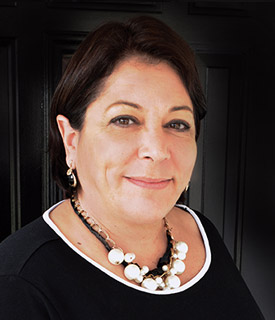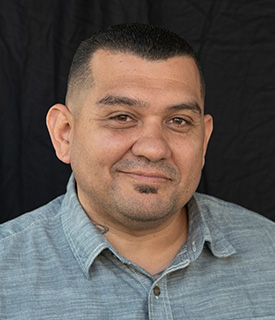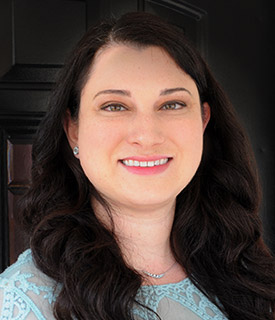CBT is a type of talk therapy that allows clients to identify negative thought processes and reframe their mindset and behaviors. It is different from other psychotherapies because it is a problem-oriented approach that focuses on finding solutions for current issues instead of bringing up the past as other therapies tend to do.
The Cognitive Model
CBT is founded on a direct and rational model of the relationships between cognition, emotion, and behavior. There are three aspects of cognition emphasized, including:
- Automatic thoughts: Thoughts that form the individual’s emotions and actions in response to events. Examples include ideas that are exaggerated, distorted, mistaken, or unrealistic.
- Cognitive distortions: Mistakes in judgment that lead to inaccurate conclusions. Examples include overgeneralization, minimization, disqualifying positive experiences, or emotional reasoning.
- Underlying beliefs: Beliefs that shape the insight and interpretation of events. They are considered templates for information processing that motivate the most outward level of automatic thoughts.
Uses for Cognitive-Behavioral Therapy
CBT can help mend many problems, making it one of the go-to treatment methods for individuals unable to take medications. Below we will discuss the different situations where CBT has proven beneficial.
Anxiety
According to the International Journal of Methods in Psychiatric Research, anxiety disorders are the most prevalent mental disorder, with 12-month frequency rates of 21.3% in the United States and 11.6% worldwide. Countless scientific studies have shown that CBT interventions for anxiety disorders result in significant improvement by reducing symptoms and reframing thought patterns. Counselors help their clients recognize the root of the problem and how to shift their mindset, which is aggressively increasing their anxiety.
Depression
CBT is one of the most evidence-based treatments for depression. Depression is also one of the most common mental disorders. When depressive disorders are concerned, CBT is a helpful tool in treating individuals by concentrating on the overall mood and acknowledging harmful and unhealthy behaviors associated with depression.
Substance Use Disorder (SUD)
SUDs are highly prevalent and can be challenging to treat, but CBT has proven beneficial in helping those who struggle with addictions. Scientific studies continue to show how effective CBT is because it focuses on managing the cycle of addiction. Furthermore, it is even more effective when combining other treatment methods with CBT, such as motivational interviewing or contingency management.
Eating Disorders
CBT is one of the most beneficial treatment methods to treat the core psychopathology of eating disorders. CBT is highly effective when treating eating disorders such as binge eating, anorexia, and bulimia. The various techniques used in CBT can work together to change the mental processes and behaviors that lead to unhealthy eating habits.
Obsessive-Compulsive Disorder
CBT is highly effective for obsessive-compulsive disorder (OCD). The success response rates range from 50% to 70% in clients treated for OCD with CBT methods. Individuals struggling with OCD have obsessive beliefs that transform into compulsive behaviors to cope with their thoughts. When applying CBT for OCD, the client obtains coping skills and insights to manage obsessive or compulsive behaviors without relying on medication.
CBT can produce positive results with other mental health disorders, such as antisocial behaviors, ADHD, bipolar disorder, conduct disorder, general stress, personality disorders, phobias, schizophrenia, sexual disorders, insomnia, and social skill problems. Furthermore, CBT can also be used for treating physical conditions such as chronic pain, tinnitus, and rheumatism by helping to relieve the symptoms.
Benefits of Cognitive-Behavioral Therapy
CBT is an extensive form of therapy because it entails much work and self-reflection, requiring the client’s total commitment. It also has many benefits when the client actively participates in the treatment process. Below are a few benefits of using CBT.
- Provides support and hope: CBT offers support and hope by helping people recognize inaccurate and misrepresentative thoughts. Individuals begin to open their minds to new opportunities.
- Increased self-esteem: Low self-esteem is often associated with mental health issues and can cause negative thoughts to impact behaviors. CBT can disrupt the continuous loop of negativity and help individuals cultivate confidence in themselves.
- Improvement for managing emotions: The behavioral angle of CBT assists individuals with managing how they react to their symptoms. This benefit can often include acquiring calmer reactions by using various relaxation techniques and helping control anger, stress, or anxiety.
- Enhanced thought processes: CBT allows individuals to gain control of their thoughts by gradually transforming negative thought processes into positive and rational thoughts, simultaneously helping to improve coping and communication skills.
The discovery of all the beautiful ways CBT can transform lives is inspirational. The wide range of mental health disorders and the benefits provided give CBT endless possibilities for healing hurting people. The overall purpose of CBT is to create a clear concept of your own beliefs, attitudes, and expectations, with the ultimate goal to discover and transform false or distressing beliefs.[/vc_column_text][/vc_column][/vc_row][vc_row][vc_column width=”1/1″][uncode_block id=”84922″][/vc_column][/vc_row]

 Kimberly Gilkey, RADT-1
Kimberly Gilkey, RADT-1 Amanda Irrgang, Registered Dietitian Nutritionist (RDN)
Amanda Irrgang, Registered Dietitian Nutritionist (RDN) David Abram
David Abram Emily Skillings
Emily Skillings Michelle Ertel
Michelle Ertel Alexandria Avalos, MSW, ACSW
Alexandria Avalos, MSW, ACSW Jovanna Wiggins
Jovanna Wiggins Kelly Schwarzer
Kelly Schwarzer Timothy Wieland
Timothy Wieland Amy Thompson
Amy Thompson Gianna Melendez
Gianna Melendez David Dalton, Facility Operations Director
David Dalton, Facility Operations Director John P. Flores, SUDCC-IV-CS, CADC II
John P. Flores, SUDCC-IV-CS, CADC II Jodie Dahl, CpHT
Jodie Dahl, CpHT Christina Lam, N.P.
Christina Lam, N.P. Kathleen McCarrick, MSW, LSW
Kathleen McCarrick, MSW, LSW Alexis Weintraub, PsyD
Alexis Weintraub, PsyD Jordan Granata, PsyD
Jordan Granata, PsyD Joanne Talbot-Miller, M.A., LMFT
Joanne Talbot-Miller, M.A., LMFT Brittany Perkins, MA, LMFT
Brittany Perkins, MA, LMFT Brieana Turner, MA, LMFT
Brieana Turner, MA, LMFT Milena Dun, PhD
Milena Dun, PhD Rebecca McKnight, PsyD
Rebecca McKnight, PsyD Laura Hopper, Ph.D.
Laura Hopper, Ph.D. Nathan Kuemmerle, MD
Nathan Kuemmerle, MD Jeffrey Klein
Jeffrey Klein Mark Melden, DO/DABPN
Mark Melden, DO/DABPN